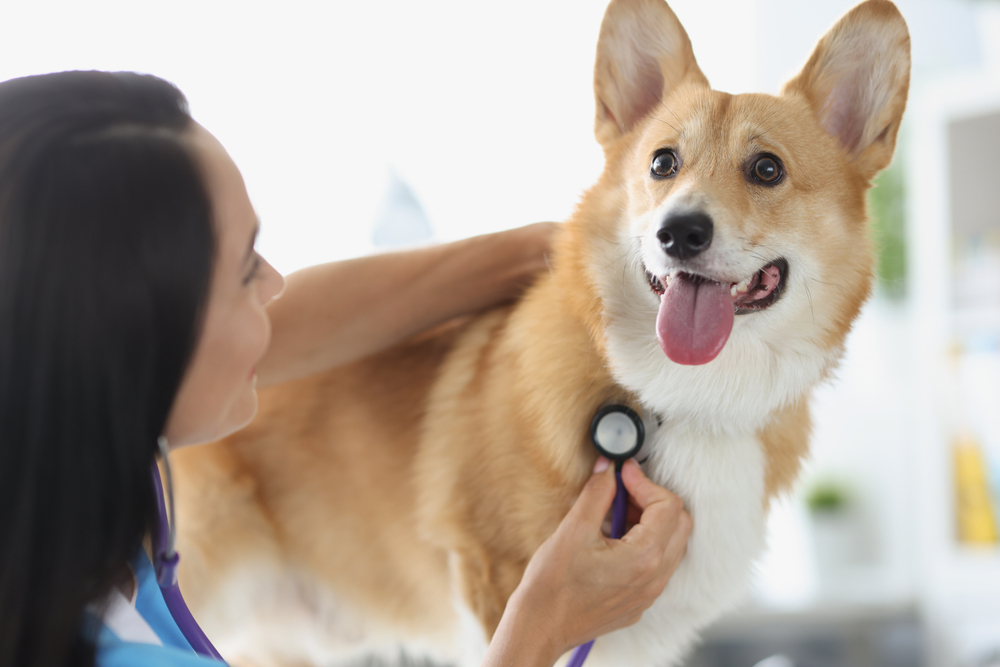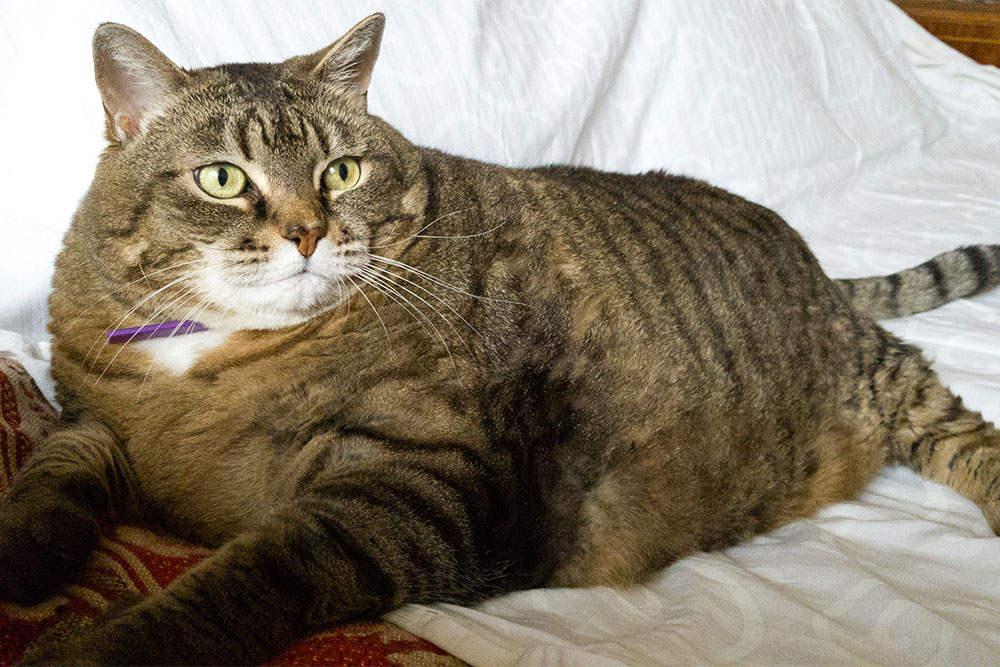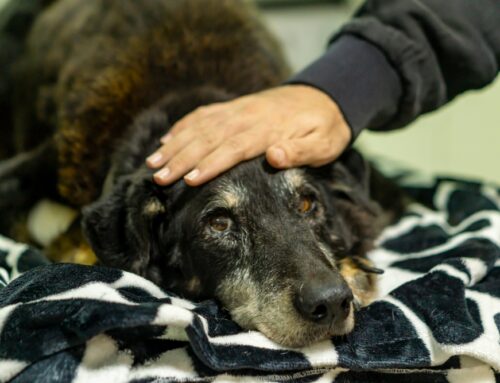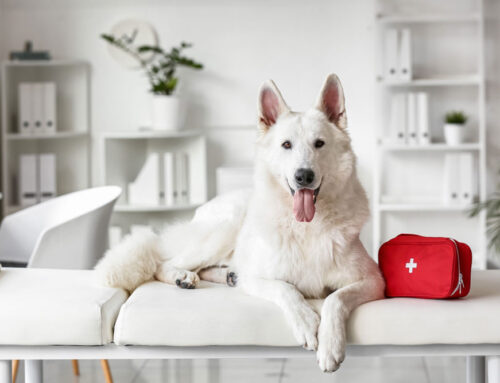Understanding Thyroid Disease in Dogs and Cats: What Every Pet Owner Should Know
Noticing your pet lose energy, gain or lose weight rapidly, or act unusually anxious can be concerning- especially since the signs are vague. While these symptoms could point to various conditions, thyroid disease is often a leading suspect. At Bayview Animal Hospital in St. Petersburg, FL, we see many pet owners struggle to identify what’s behind subtle but significant changes in their pet’s behavior. Thyroid disorders, such as hypothyroidism in dogs and hyperthyroidism in cats, are more common than many realize, and the good news is that with proper diagnosis and care, they can be effectively managed.
This guide breaks down the signs, causes, diagnosis, and treatment of thyroid conditions in pets. Our veterinary team is committed to keeping you informed, confident, and ready to make the best decisions for your pet’s health.
The Basics: Thyroid Disease in Pets
The thyroid gland, located in the neck, produces hormones that regulate metabolism. An imbalance in these hormones can lead to either an underactive or overactive metabolic state. These conditions are especially prevalent in middle-aged to older pets.
- Hypothyroidism is most often seen in dogs and occurs when the thyroid doesn’t produce enough hormones.
- Hyperthyroidism is more common in cats and happens when the thyroid produces too many hormones.
Both conditions disrupt the body’s normal functioning and, if untreated, can impact everything from heart function to skin and coat health.
Causes and Risk Factors of Thyroid Disease in Pets
Hypothyroidism in Dogs
Hypothyroidism occurs more frequently in medium to large breeds such as Golden Retrievers, Doberman Pinschers, and Irish Setters. Age is also a factor, with middle-aged dogs most often affected.
Most commonly, hypothyroidism in dogs results from:
- Autoimmune thyroiditis, where the immune system damages the thyroid gland
- Idiopathic atrophy, where the gland shrinks without a known cause
Hyperthyroidism in Cats
Hyperthyroidism is particularly common in senior cats. While most cases are caused by overactive thyroid tissue, several factors can contribute to the disease:
- Overproduction of thyroid hormone due to abnormal cell growth in the gland
- Tumor changes ranging from benign adenomas to, less commonly, thyroid carcinoma
- Possible dietary or environmental influences, including excess or fluctuating iodine intake
Why Early Detection of Thyroid Disease in Pets Matters
Thyroid hormones influence nearly every system in the body. Unmanaged hypothyroidism can lead to weight gain, lethargy, skin disorders, and even neurological issues. Hyperthyroidism can place strain on the heart, increase blood pressure, and worsen kidney function. Identifying symptoms early allows treatment to begin before complications develop.
Preventive testing for senior pets is one of the most valuable tools for catching thyroid disease in its early stages.
Thyroid Disease Symptoms to Watch For in Pets
Hypothyroidism in Dogs
Common signs of hypothyroidism in dogs can vary, but often include the following physical and behavioral changes:
- Unexplained weight gain
- Low energy or decreased interest in exercise
- Intolerance to cold
- Hair loss or thinning coat
- Dry, flaky skin
- Chronic ear infections
- Behavioral changes, such as confusion or reduced alertness
Hyperthyroidism in Cats
Hyperthyroidism in cats often presents with a range of noticeable physical and behavioral symptoms, including:
- Weight loss despite an increased appetite
- Vomiting or diarrhea
- Increased thirst and urination
- Rapid heart rate
- Agitation or hyperactivity
- A palpable lump in the neck
- Behavioral changes in older cats
How Thyroid Disease Is Diagnosed
At Bayview Animal Hospital, a thyroid disease diagnostic evaluation typically includes:
- Physical examination to detect changes in heart rate or an enlarged thyroid gland
- Bloodwork measuring thyroid hormones (Total T4, Free T4) and thyroid-stimulating hormone (TSH)
- Advanced testing, such as antibody levels or thyroid imaging, when needed
These thyroid tests are available through our on-site diagnostic capabilities, ensuring timely results and accurate treatment planning.
Thyroid Disease Treatment Options
Managing thyroid conditions in pets typically involves long-term care, but with the right approach, most cats and dogs respond well to treatment. Below is an overview of common options for managing both hypothyroidism in dogs and hyperthyroidism in cats.
Managing Hypothyroidism in Dogs
- Daily hormone replacement therapy using levothyroxine
- Routine blood testing every 3 to 6 months to fine-tune dosage
- Supportive treatments for skin, weight, or ear conditions
Once properly managed, hypothyroid dogs often regain their normal energy levels and appearance.
Managing Hyperthyroidism in Cats
- Methimazole medication, given orally or topically
- Radioactive iodine therapy, a permanent solution that eliminates overactive tissue
- Surgical thyroidectomy, used in select cases
- Therapeutic diets formulated with low iodine levels
Cats should also have their heart rate and blood pressure measured regularly, as uncontrolled hyperthyroidism can damage the cardiovascular system.
What Life Looks Like With Thyroid Disease
Managing thyroid disease in pets can easily become part of your daily routine. This chart can give you an idea of what you and your pet’s new normal may involve:
| Daily Responsibility | What It Might Involve |
| Medication Administration | Oral pills or gels given once or twice a day |
| Monitoring | Watching for changes in weight or energy levels |
| Diet Management | Using prescription foods or feeding schedules |
| Comfort Enhancements | Warm bedding for hypothyroid dogs, cool spaces for hyperthyroid cats |
Most pets adjust well once a consistent care routine is in place. Ongoing partnership with your veterinarian ensures continued success.
At-Home Support and Prevention
While not all thyroid conditions are preventable, steps can be taken to improve outcomes:
- Schedule regular checkups and annual blood work
- Keep a health journal tracking your pet’s behavior, appetite, and energy
- Avoid unnecessary exposure to chemical or dietary disruptors
- Use veterinary-recommended diets and supplements
- Maintain a low-stress home environment
Preparing for a Veterinary Visit
A little preparation can go a long way in helping you feel more confident and get the most out of your pet’s appointment:
- Bring a list of your pet’s current medications and supplements
- Note any appetite, behavior, or weight changes
Also consider preparing questions, such as:
- What is the long-term outlook for my pet?
- What follow-up care is necessary?
- Are there alternative treatment options?
You can request an appointment online to start the process.

Frequently Asked Questions
Can thyroid disease be cured?
Hypothyroidism is managed with lifelong medication. Hyperthyroidism may be cured with radioactive iodine therapy or surgery.
Is treatment expensive?
Most medications are affordable, and long-term management can be cost-effective when integrated into routine care.
Will my pet’s personality change?
Pets often return to their usual selves once their thyroid levels are stabilized.
How quickly will I see results?
Improvements can begin within a few weeks, but full regulation may take several months.
Supporting You Every Step of the Way
Unexplained weight changes, behavior shifts, or low energy in your pet shouldn’t be ignored. Thyroid disorders are manageable with early detection and a consistent care plan. At Bayview Animal Hospital, our team is here to help guide you through diagnosis, treatment, and long-term monitoring.
If you suspect your pet may have a thyroid condition or you want to learn more, schedule a consultation. With the right care, your pet can enjoy a happy, balanced life, one well-managed hormone at a time.







Leave A Comment